Preparation:
At last the weather had improved enough to get out and do a SOTA activation again! Interestingly Mike 2E0YYY in the UK and I were finding that propagation between EU and VK has been changing over the last couple of months and long path on 40m around 0830 UTC and short path on 20 metres around 1130 UTC seem to be the best at this moment in time. A cunning plot was hatched to confirm or deny this principle and at the same time test a new VP2E (Vertically polarised 2 element) antenna I have built for 20m.
As to test the VP2E’s directivity (it’s supposed to have 3dBd gain in one direction) I need quite a lot of space, I decided that I would go to Rentschen DL/AM-176 which is a very flat plateau with easy access to it. I could then set-up two antennas – the normal linked dipole for 40m and on a second mast, the VP2E on another mast. While waiting for conditions to come good on 40m, I would run the VP2E with my WSPRLite attached so I could see how it’s 200mW was getting out and rotate the antenna from time to time to see what effect it had. While there are several hours between the expected long path time and the short path, I decided I that after finishing contacts from Rentschen, I would pack up and head off to Weichberg, a 30 minute drive away. That summit isn’t quite as easy to access, so I would just carry one mast and the 20m mast up to that summit.
The equipment was packed the night before with my large Surveyors tripod as one mast support and the screw-in sun umbrella base as the support for the second mast as there are no convenient posts to strap the masts to at either Rentschen or Weichberg. The rig would be the Xiegu X108G with its “good” 20 watts of output and a USB cable and the PocketRxTx smart phone App as the OLED screen on the “outdoor version” of the X108G is totally unreadable outside! I can read and control the rig from my Android smart phone using PRxTx.
We managed to line-up Ernie VK3DET, John VK6NU from their homes and Jonathan VK7JON with Helen VK7FOLK who would drive out and set up portable on the coast They would listen on the bands for myself and Mike who hoped to get to one of his favourite Welsh SOTA summits. Unfortunately Mike’s car failed the annual “MOT” test and the garage didn’t have the parts so he had to order them, which did not arrive on time, so Mike decided to head out to a local pack within 15 minutes walk of his home and operate from there.
The Location:
Rentschen is about a 45 minute drive from home, the road goes right over the top of it and I usually park next to the one tree on the top of it. The exact summit is marked by a trig point stone about 50 metres into the field – along a track from there – under the high voltage power lines, which can sometimes cause some interference.
Weichberg is also one of my “local” summits, the drive from Rentschen should take almost exactly 30 minutes along the country roads from Weichberg back home takes about 40-45 minutes. There is a parking space and a track up through the forest which normally takes another 5 minutes. Weichberg has a small chapel on top of it along with a regional TV and radio transmitting tower so it’s relatively easy to find. There is a table and bench seats and enough room for one antenna on the lawn next to the chapel. Like at Rentschen, there are no handy posts to support the mast bases, hence the need for the tripod or screw-in umbrella base.
The Activation:
The alarm was set for 6:30am local (0530 UTC) and I was on the road by 7:30 am as per my planned schedule. The main roads were now clear of ice and snow although as I approached Rentschen, things started to look less good. There were some black ice patches on the small road up to the summit where care was needed and as I came over the brow onto the plateau, I could see I had a problem. the road had been cleared for traffic in one direction to get through but at the side of the cleared road, the snow was still almost 2 metres high in places and when I got to the small track where I normally park, it hadn’t been cleared. There would not be enough room to park at the side of the cleared road for anyone else to get past and how stable the deep snow would have been to hold my weight was questionable. I drove further along the road and started to go down the other side of the hill where I found someone’s drive way which had been cleared. I wasn’t going to park there but it served as a place to turn around and head back down to the main road (the actual road stops about a kilometre further along). This was about 8:30 am by now and I decided my best option was to head for Weichberg without any further delay in the hope that it’s car park spots had been cleared and access was possible up the forest track. I had already jotted out on a piece of paper the cross-country route to the second summit and followed that to arrive at the Weichberg car park 30 minutes later. The car park had been partially cleared but the forest track was going to be a challenge, but I could see others had used it (albeit carrying less equipment and hence weight as I would be), but it should be possible.
At this point of course I had to reduce the equipment I took with me and as well as the radio equipment in my usual two bags, I decided on taking the large tripod and leave the sun umbrella base and just take one short mast of the three I had brought with me. All of the wire antennas were in one of the two bags, along with the FT-817 which was the spare rig, so that all got left in the bags and with the 6 metre mast, the large tripod and the two bags slung on my back or over a shoulder I set-off. Then I stopped as I realised the ground was very icy and I had my shoe spikes with me in the large anorak that I had on. I fitted those to my shoes (they were a real help and stayed on all the time until I returned to the car). The walk up the forest track took a different route to what I remembered but while I was following other people footprints (in some cases in 1 metre deep holes at other times on top of the snow), I stuck with the route that the others had taken and after about 10 minutes I had reached the summit. What I found there you can see in the pictures below. The snow had drifted and was over 2 metres deep in places. Luckily with the severe frost from the night before the surface was solid as long as you didn’t stand in one place for too long. The area around the bench and wooden table was fairly clear and so everything got put on the table to start with and I would take things out onto the snow one at a time as I needed them. This would take longer but I shouldn’t lose things that way.
First of all I wanted to put the tripod almost in the middle of the lawn so that there would be room to run out the linked dipole in the correct direction for sideways radiation towards Australia – long path and also enough room for targeting the VP2E later for the short path 20m attempt.
The linked dipole, set to 40m went up first and the coax thankfully was just long enough to run back to the bench. The X108G and battery box were taken from one bag and connected up along with the smart phone as already it was difficult to read what was on the Xiegu’s screen!
I was in contact via email with Ernie VK3DET through the whole activation, so I let him know where I was going to be on 40m and also put out a spot on Sotawatch. Both of these actions were made more difficult by the fact that the phone was connected via the USB cable to the rig to act as its control display.
Activity on 40 metres was quite brisk with me making a total of 23 contacts between 0830 UTC and 0910 UTC, with breaks every 4 or 5 stations to specifically call for any VK stations (none came back).
The start-up time had been exactly 08:30 UTC and as I was later to find out, exactly the END of the 40m Long path window to VK from Europe. If I had set up at Rentschen as planned or if I had decided to use Weichberg as my first summit. I would have had a chance of some long path contacts into VK. Mike had also been delayed by waiting on the replacement parts for his car so once he was on we were both trying with Ernie and John in VK to no avail. I did get good reports from the 23 stations around Europe but nothing further a field.
Once 40m was quieter and it was obvious that it was too late for long path contacts, at around 0945 UTC I took down the 40m dipole and put up the VP2E, aimed at Australia Short Path. I was interrupted at this point by a walker and explained to her what I was doing. It was obvious she wasn’t so interested so with a few comments about the weather, she continued her journey. I then tried a few CQ calls after spotting myself on the SOTA cluster but go no contacts. As it was still some time before the hoped for short path to Australia, I put the WSPRlite on the antenna and left it to get logged while i got something to eat from my pack-up. In the cold temperatures, despite the sunshine, some food was a good idea!
While monitoring the WSPR map, it seemed that contacts were getting better, so at around 1040 UTC, I switched back from the WSPRlite to the rig. At this point I could here a lot of interference that I hadn’t heard earlier on 40m and tracked it down to being the Smart Phone passing interference down the USB cable. So I know moved into a mode of only connecting the USB cable when I wanted to change frequency and otherwise operated the rig “blind”. Despite several moves because of QRM from other stations and several spots on SOTAWatch, I only managed one contact on 20m with the VP2E and that was with Oleg RN3QN near to Moscow and we exchanged true 5-9 signals both ways. Watching WSPR on the smart phone I could see that propagation on 20m was getting worse again – it had peaked only over about 15 minutes between 1100 and 1115 UTC. After talking to Oleg another walker came by and he showed more interest than the earlier visitor and so was given a brochure in German about Amateur Radio that I have with me for such situations. After a bit of a chat and him wishing me good luck he went off on his way. Unfortunately the good luck didn’t help and by 1145 UTC, I decided to pack up, with my VK stations heading to bed in any case, there would be no more chances today.
The trip back down the forest track didn’t have too many problems, those shoe spikes continuing to do a good job and only sinking into the snow twice, I got safely back to the car and the drive home was uneventful.
Photos:
Equipment taken to summit:
Xiegu X108G 20w transceiver, with FT-817ND along as a spare.
SOTABeams Band Hopper linked dipole.
Home made VP2E 20m antenna with 20/17m linked version along as backup
LambdaHalbe 6m Mini-mast.
Surveyors tripod with wooden plate and hole for mast to pass through.
Thick plastic painters sheet (not used).
Logs (WSPR & SOTA):

 Conclusions:
Conclusions:
- Too late for the 40m Long path into VK. 30 minutes earlier and there may have been some VK entries in the log.
- The surveyors tripod, despite it’s size and weight gives a reliable support when no other is available – even on top od 2 metres of snow!
- The test of the VP2E antenna was inconclusive because of conditions and the lack of possibility to do a comparison test against the dipole.
To be fixed / changed:
- On 20m, the RFI from the smart phone back down the USB cable to the rig is totally unbearable and needs to be addressed.
- The BNC plug on the cable to the VP2E antenna was intermittent and should be changed for a PL-259 to avoid the need of using an adapter.
73 ’til the next Summit!









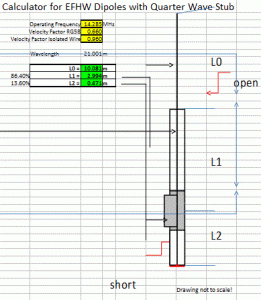






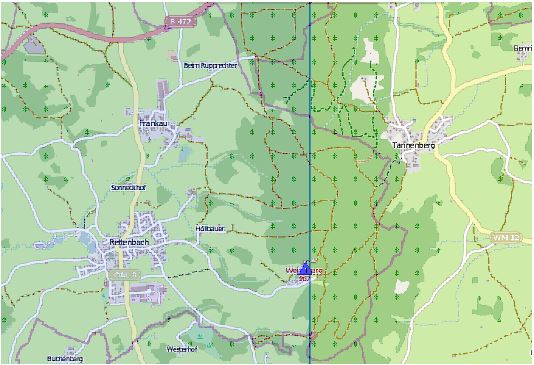


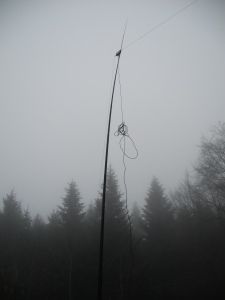


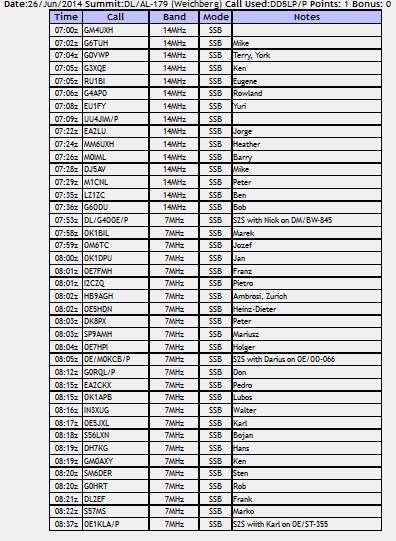
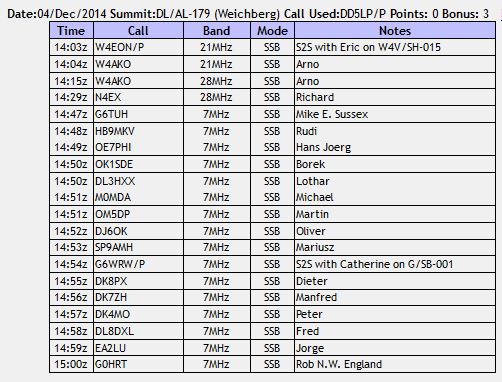
You must be logged in to post a comment.